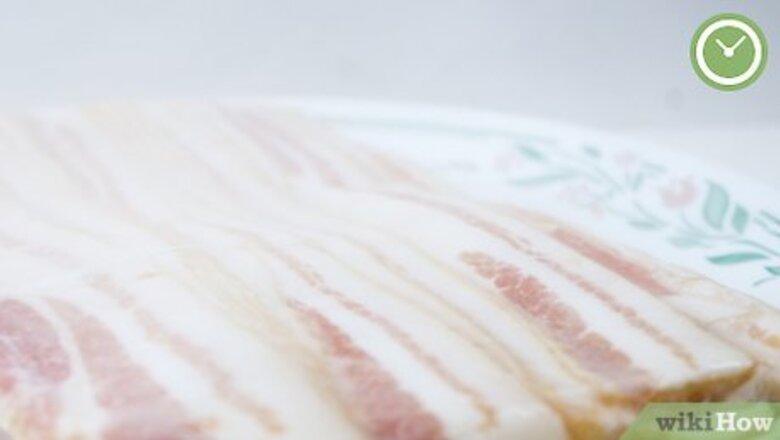
views
Dicing Raw Bacon
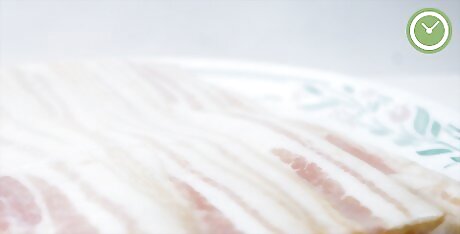
Freeze the bacon for 15 to 20 minutes. This makes it easier to cut the bacon without it sliding around or stretching on your cutting board. Avoid freezing the bacon until it's completely solid since this could dull your knives. If you don't want to dice an entire package of bacon, freeze as many strips as you'd like to dice. You can place them into a sealable bag or put them on a plate and loosely cover it.
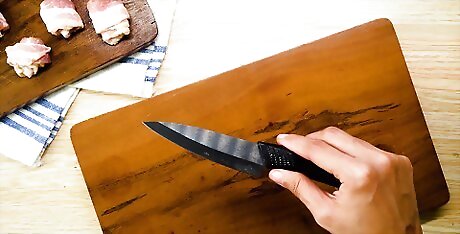
Select a razor-sharp chef's knife to make dicing easier. If your knife is dull, take a few minutes to sharpen it. Using a sharp knife makes it easier to slice through the bacon and can prevent you from accidentally cutting yourself. Avoid using a small paring knife, since it's not large enough to cut across several slices of bacon. You should also avoid using a serrated knife since it could stretch or pull the meat.
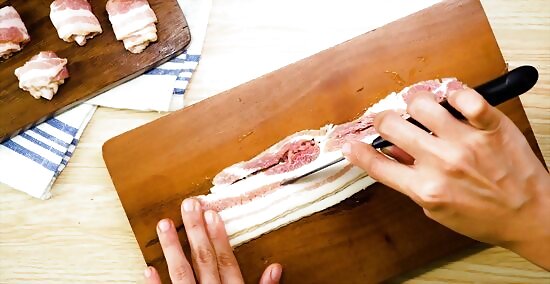
Slice the slightly frozen bacon lengthwise into ⁄4 inch (0.64 cm) strips. Remove the bacon from the freezer and lay it on your cutting board. There's no need to separate the pieces of bacon if they're in a slab or layered across each other. Cut the bacon into long narrow strips.Tip: If your recipe calls for bacon lardons, just cut across the bacon to make short strips that are ⁄4 inch (0.64 cm) wide. Then, cook them according to your recipe. If you're only dicing a few slices, you can stack them into a single layer to speed up the dicing process.
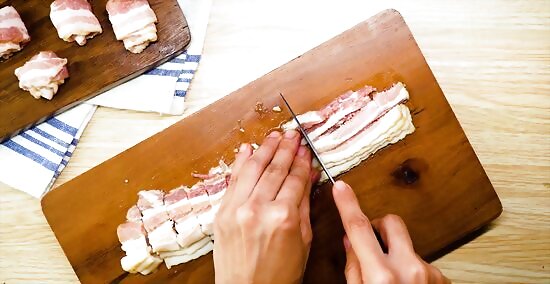
Cut the strips into ⁄4 inch (0.64 cm) wide pieces. Turn your knife 90-degrees and cut ⁄4 inch (0.64 cm) wide strips. As you cut, the bacon will form small cubes that you can push to the side of your cutting board. Feel free to adjust the size of your diced bacon. You could make ⁄2 inch (1.3 cm) pieces, for instance.
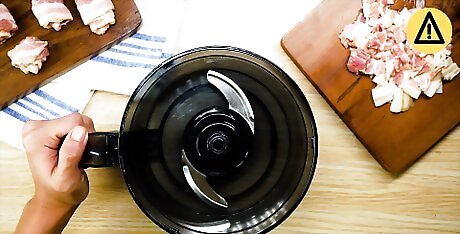
Avoid using a food processor to dice bacon. You might be tempted to reach for the food processor to speed things up, but it doesn't do a good job of dicing meat. This is because the food processor blade pulls and shreds the meat before grinding it. You won't end up with distinct pieces of bacon if you put the strips in the food processor.
Chopping Cooked Bacon
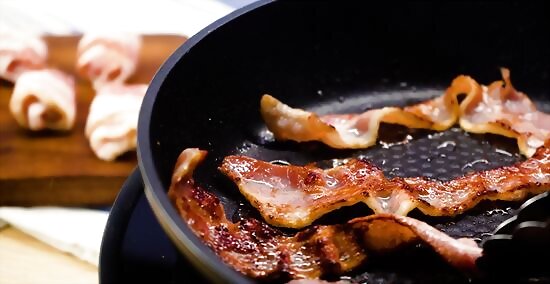
Fry or bake the bacon until it's slightly crisp. Cook as many slices of bacon in any way you like. You could fry them on the stove, bake them in the oven, or cook them in the microwave, for instance. If you cook the bacon until the slices are completely crispy, they'll crumble when you try to cut them.
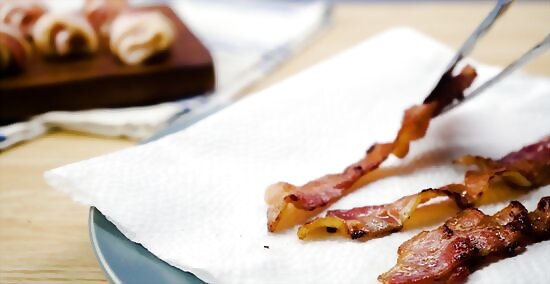
Drain the bacon on paper towels if you want to remove excess grease. Depending on the type of bacon you cooked, it may be covered in grease. Lay paper towels on a plate and place the bacon slices on the towels. Leave them for at least 30 seconds so the paper towels absorb the grease. You can skip this step, but the bacon might be slippery on your cutting board.
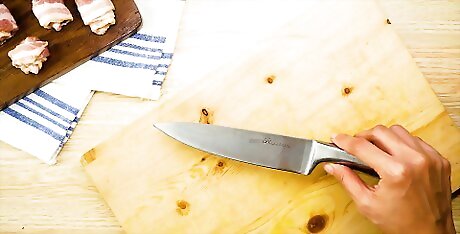
Choose a sharp chef's knife for chopping the bacon. It's important to use a knife that has a wide blade so you can a knife down through several pieces of bacon at a time instead of sawing back and forth. Avoid using a small paring knife because it's not large enough to cut through more than 1 piece of bacon. If your knife isn't sharp, use a knife sharpener before chopping the bacon.
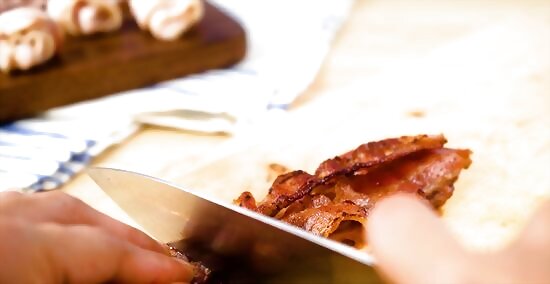
Cut the bacon into ⁄4 to 1 inch (0.64 to 2.54 cm) pieces. Transfer the cooked bacon strips to a clean cutting board and stack them into a single layer. Take your knife and carefully cut across the strips to make rough pieces. Keep in mind that since the cooked bacon crumbles more than raw bacon, it's trickier to get finely diced bacon pieces.Tip: To make bacon bits, chop the pieces of bacon until they're fine. Scoop the bacon back into a pile and keep chopping until the pieces are the texture of breadcrumbs. Use the bacon immediately or store it in an airtight container in the refrigerator for up to 5 days.




















Comments
0 comment